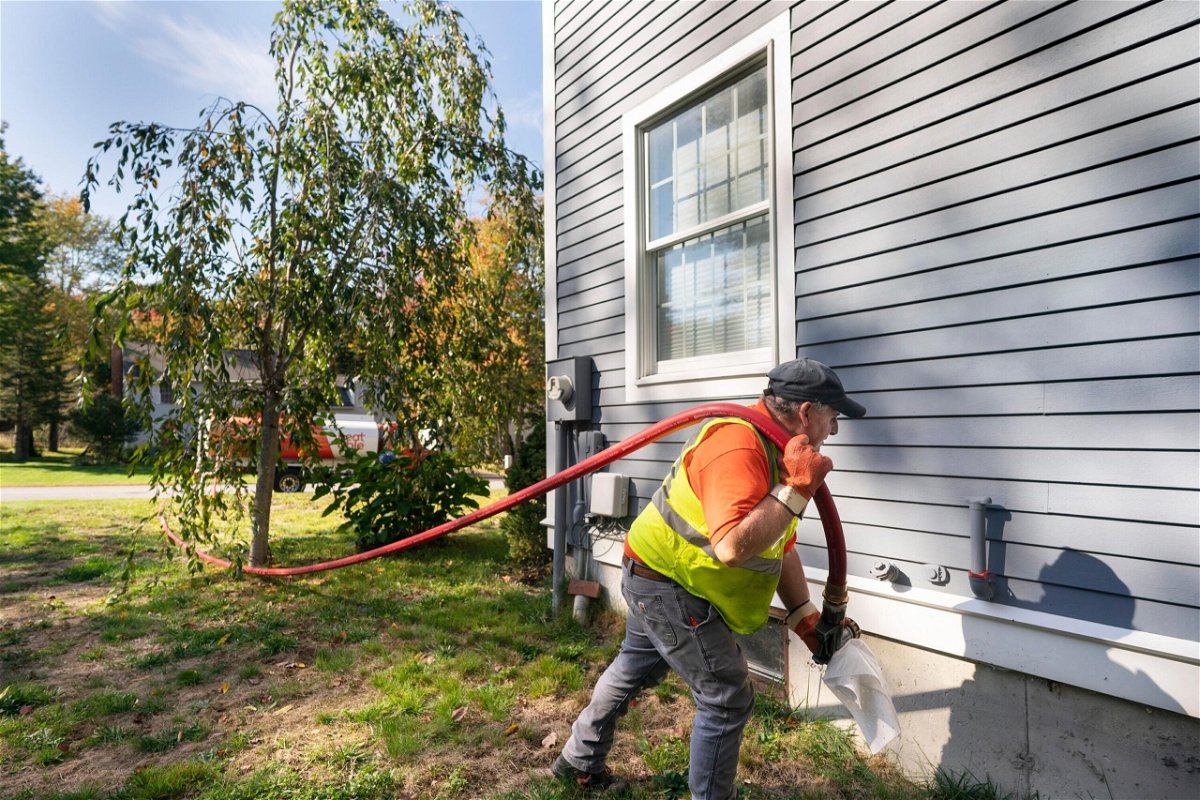Americans get another $100 million in federal aid for soaring home energy costs

A man delivers oil to a home in Scarborough on Wednesday
By Tami Luhby, CNN
Struggling Americans are getting some more help to pay their home heating bills, which have skyrocketed for many this winter, the Department of Health and Human Services announced Tuesday.
The agency is adding $100 million to the Low Income Home Energy Assistance Program, which helps families afford heating and cooling. The infusion is the first installment of a five-year, $500 million investment contained in the bipartisan infrastructure package enacted last year.
The money is on top of more than $8 billion flowing into the program from the American Rescue Plan Act, enacted last March, and from Congress’ annual appropriation in its continuing resolution approved in September.
Though this is an unprecedented level of funding for the 41-year-old program, it will likely fall short of meeting all the need, experts have said.
Typically, LIHEAP assists more than 5 million Americans — about 1 in 6 eligible households.
The additional funding means that more families will be served than ever before, said Lanikque Howard, director of the Office of Community Services at HHS’ Administration for Children and Families, which runs the LIHEAP program.
However, she could not estimate how many more would be helped, in part because state agencies that distribute the funds can opt to provide larger awards to fewer people or smaller ones to more residents.
States, municipalities and community organizations can draw on other coronavirus relief measures — including the roughly $45 billion Emergency Rental Assistance program and the $350 billion State and Local Fiscal Recovery Fund — to help residents with home energy costs.
Those who make either 150% of the federal poverty line, which is about $40,000 for a family of four, or 60% of their state median income, whichever is higher, are eligible for LIHEAP.
The pandemic relief funds, meanwhile, have different eligibility criteria and can help a wider swath of households, including middle-income families who don’t qualify for LIHEAP.
More Americans are struggling to pay their heating bills as energy costs surge. While the increase has receded a little from the US Energy Information Administration’s fall forecast, prices remain elevated.
Consumers are expected to pay 39% more for propane, 37% more for heating oil, 28% more for natural gas and 2.7% more for electric heating, on average, compared with last winter, according to the administration’s January outlook. They’ll spend even more if the winter is colder than forecast.
Several state grant recipients told HHS that they are seeing a 20% increase in applications from needy residents, Howard said.
Total utility arrearages increased to about $22.3 billion in 2021, up from $20.2 billion a year earlier, according to a preliminary analysis by the National Energy Assistance Directors’ Association. The number of households in arrears dropped to around 21 million in 2021, down from about 23 million a year earlier.
The pandemic-related utility shut-off moratoriums have ended, though some states offer temporary shut-off protections during the winter.
Those looking for help can call the National Energy Assistance Referral hotline at 866-674-6327 to get connected to their local LIHEAP office. They can also search for a local agency at Liheapch.acf.hhs.gov/help.
The-CNN-Wire
™ & © 2022 Cable News Network, Inc., a WarnerMedia Company. All rights reserved.